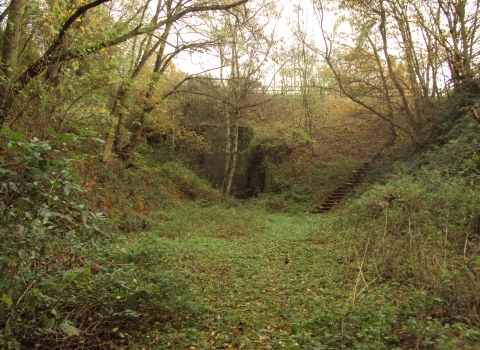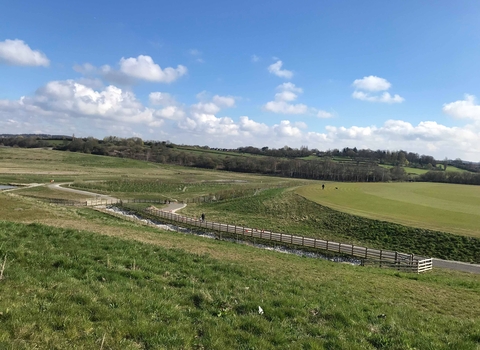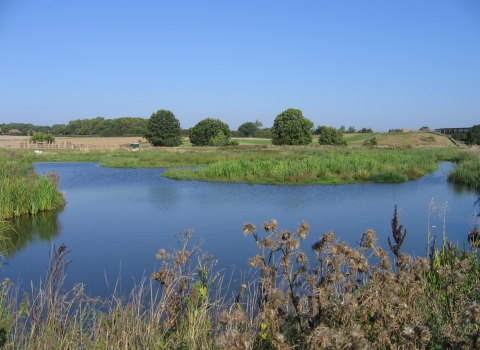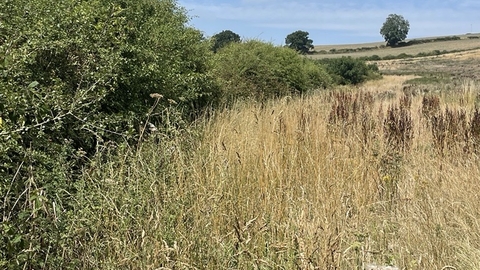
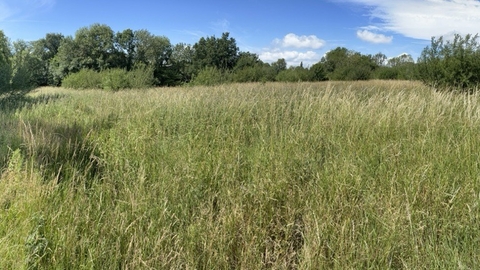
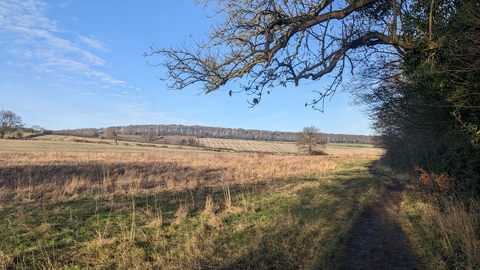
Wild Whittington
Location
Know before you go
Dogs
Need info for dogs
When to visit
Opening times
TBCBest time to visit
TBCAbout the reserve
Wild Whittington: Transformation in Action
Our first Making Space for Nature site is in Chesterfield and demonstrates the power of this approach. This 24-hectare site was transformed from low-value arable land into a nature-rich mosaic, which acts as a Habitat Bank. Located just 5km from the city centre, Wild Whittington provides accessible nature for local communities whilst creating crucial links between isolated woodland fragments.
Now two years into its transformation from arable farmland, Wild Whittington shows remarkable ecological progress. Since we started rewilding the site in 2023, the site has seen the expansion of willow scrub, many previously missing pollinator species, breeding birds such as skylark and flowering native shrubs like blackthorn. One of the most significant recent developments has been many sightings of grass snakes over the summer - an important indicator species that had been absent for years. Grass snakes require a complex mosaic of habitats including wetlands, scrub and open grassland for successful foraging, basking and breeding, making their presence a strong indicator of improving habitat quality.
Wild Whittington connects relatively isolated priority woodland to the south with ancient woodland corridors to the north; the total connected area is about 50 hectares. This strategic positioning means every species that colonises Wild Whittington can potentially spread across a much wider network.
With the land taken out of intensive cultivation, natural regeneration has begun, allowing flora and fauna to re-establish with minimal intervention. In our surveys we have recorded a growing number of species; mammals, birds, bats and reptiles. We will bring large animals back to create structural diversity, building a dynamic habitat mosaic that will support long-term increases in nature.
We are using innovative monitoring approaches, combining traditional ecological surveys with remote sensing and machine learning frameworks. Satellite imagery and drone-based multispectral data provide cost-effective, year-round monitoring that's ground-truthed by our ecologists, ensuring robust evidence of habitat condition and adaptive management needs. We're also listening to changes at the site, using long term acoustic monitoring.
Visitors walking the site's footpaths can witness this rewilding in action. What began as uniform crop fields now shows natural succession; grasslands with different characters, scrubland establishing along field margins and woodland areas beginning to mature. Each season brings visible changes as natural processes take hold.
For many visitors, especially families from nearby communities, Wild Whittington offers first hand experience of watching a landscape heal itself. The site has also hosted knowledge-sharing visits from Chesterfield Borough Council members and staff from other Wildlife Trusts, demonstrating its wider influence for nature's recovery beyond Chesterfield itself.

